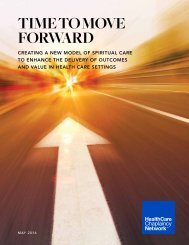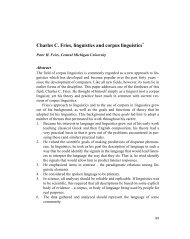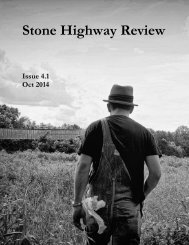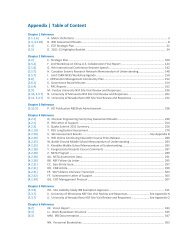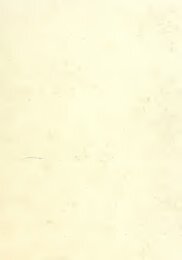Hubbard_Teacher_Guide_-_FINAL
Hubbard_Teacher_Guide_-_FINAL
Hubbard_Teacher_Guide_-_FINAL
Create successful ePaper yourself
Turn your PDF publications into a flip-book with our unique Google optimized e-Paper software.
LANGUAGEVOCABULARYThe following words appear throughout the guide.ARTISTIC DIRECTOR The person whomakes the artistic choices and decisionsfor a company, such as deciding whichdancers to hire, which choreographers touse, and which dances from the repertoire(collection of dances) to perform oneach program.AUDIENCE People who have gatheredtogether to hear or watch something.They may gather formally in a hall designedto host professional performancesor they may gather in a classroom toobserve each other’s work.CHOREOGRAPHY The process of creatinga dance. The word “choreography”originates from the Greek word choros(meaning “to dance”) and graphos(meaning “to write”).CHOREOGRAPHER The person who creates,arranges, and/or directs the movementsof the dancers.GENERAL SPACE The area of spacethrough which a dancer travels or takeshis personal space; it may include adance studio, a stage, a classroom, or thegymnasium; pathways and directions aredefined in this space.GESTURE A movement of the body orpart of the body that a dancer makes inorder to express an idea or an emotion;everyday gestures include a hand shake,a wave, or a fist; abstract gestures indance are those movements given specialemotional or content meaning by achoreographer.IMPROVISATION Movement that is createdspontaneously.ISOLATION Movements restricted to onearea of the body such as the shoulders,rib cage or hips; isolations are particularlyprominent in jazz dance.LEVELS The height of the dancer in relationto the floor: high, medium, or low.When a dancer is at a low level, a partof his torso is touching the floor; whena dancer is at a middle level, his feet areflat on the floor; and when a dancer is ata high level, he is in the air or on his toes.LIGHTING DESIGNER The person whodecides which lights will help create thedesired mood of the dance. Mood iscreated through the use of light, shadow,and color.LOCOMOTOR Movement that occursin general space when a dancer movesplace to place; basic locomotor movementsare walk, run, skip, jump, hop,leap, slide, and gallop. Low level locomotormovements may be rolling, crawlingor creeping.MODERN BALLET A choreography thatmaintains elements of traditional balletbut that was created during the 20 th century;many modern ballets are abstractand nonliteral.MODERN DANCE A performance movementform that evolved at the beginningof the 20th century.NON-LOCOMOTOR Movement thatoccurs in a person’s space with onebody part anchored to one spot and isorganized around the spine or axis of thebody. Basic non-locomotor movementsare bending, stretching, twisting, rising,falling, opening, closing, swinging, andshaking.PERSONAL SPACE The kinesphere thatone occupies that is defined by the reachspace around the body; it includes alllevels, planes, and directions both nearand far from the body’s center.40 UMS 09-10



